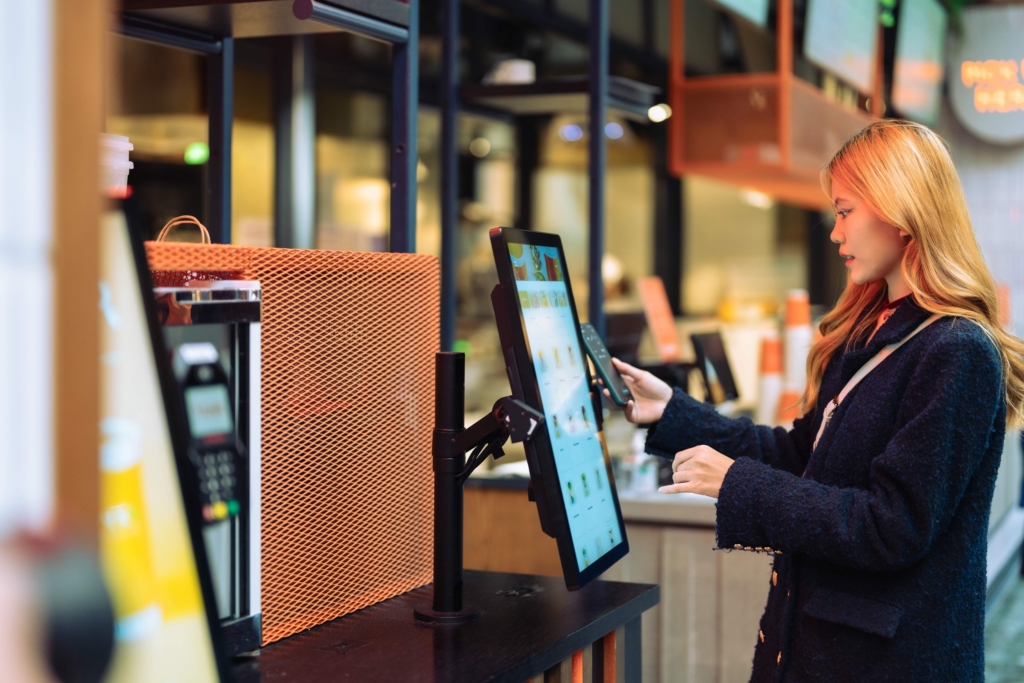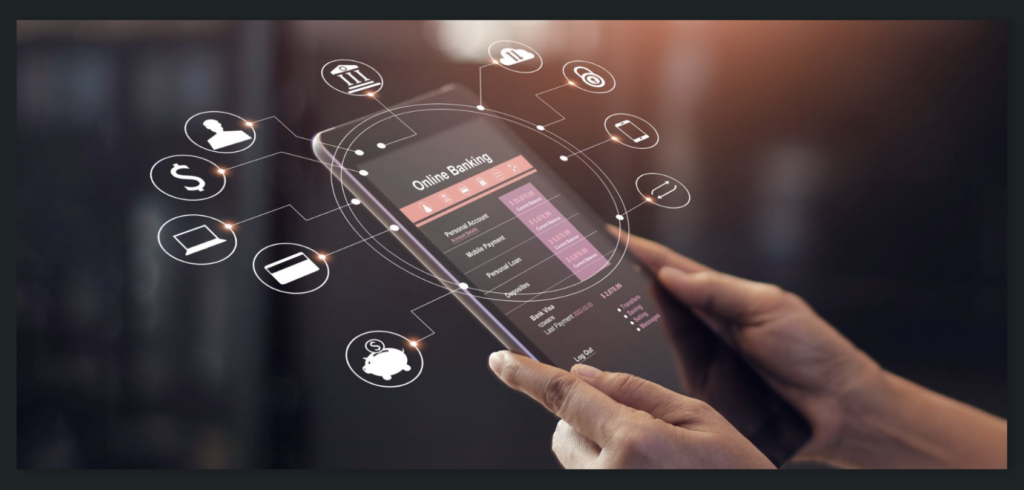Article
Invisible Banking Use Cases and Technology

What is invisible banking?
Invisible banking refers to the financial services embedded into banking customers’ everyday routines and experiences. Financial services and banking functions that are convenient, unobtrusive, and fall seamlessly in line with the natural flow of our daily activities enable a new, powerful way of carrying out our financial affairs.
As banking customers, in many cases we aren’t even aware of the banking processes involved in what we do every day. These banking processes already factors into our lives, even if we’re not aware of it. Unobtrusive technology “under the hood,” which will be a key focus of this article, plays a significant role.
Mobile applications for digital banking, online payment, and other instant payment technology tools are some of the powerful recent innovations in the banking sector, but what is the future of digital banking? And where are we going next?
In this post, we’ll cover:
- Why the financial sector is primed for more invisible banking use cases
- Examples of emerging technology
- A perspective on what evolutions we can expect next
- The steps banks, credit unions, and other financial organizations can take to gain competitive advantage

Why is the financial sector so primed for invisible banking and other forms of digital transformation?
The financial sector is one of the most advanced in its digital transformation journey due to three key factors:
- The demand of customers for seamless financial interaction—a theme that extends across many industries as customer experience (CX) evolves
- The natural fit of embedded, innovative tech that streamlines financial services
- The ability for banks, credit unions, and other financial institutions to provide world-class services because of the alignment of customer expectations with the emerging tech that fits into the processes and workflows of the financial sector so naturally
Take the simple example of tap to pay. Although it’s been available for over a decade, we’re seeing more tap to pay adoption. NFC-powered technology (near-field communication) is continuing to gain prominence as we shift to less physical interaction between vendors and customers (due to social distancing, maturing e-commerce platforms, etc.). But tap to pay also ties to convenience and cybersecurity, both of which are pillars of this innovative banking solution’s value proposition.
Tap to pay isn’t the only example. Before we get into other use cases and examples of the technology that enable invisible banking, however, let’s discuss why adopting innovative services is vital for financial institutions in the first place.
Why is adopting innovative banking services so critical?
In their 2024 CX Trends Report, Zendesk confirms that:
- Providing immediate service is vital—72% of respondents in their study expect it
- Context-aware customer service is critical—70% of respondents expect CX reps to approach conversations without any gaps in knowledge or understanding
- Seamless physical and digital integration is a priority—62% of respondents think experiences should naturally flow between channels
- Personalization of services and personalized recommendations are a must—62% of respondents agree that personalized recommendations are preferable to generalized insights
When it comes to customer experience (CX), there’s a shift toward immediacy, seamlessness, and personalization across industries. In many financial industry use cases, routine day-to-day financial transactions are already carried out in primarily digital environments that satisfy customer experience best practices. Even with an emphasis on innovative branch transformation, many organizations’ physical branches have shifted to focus more on back office consulting work, organizational problem solving, or highly-personalized, à la carte customer service.
But as emerging tech like generative AI and other forms of artificial intelligence continue to mature, we expect to see an even greater shift. With invisible banking technology, nearly immediate, contextually aware, seamlessly integrated, and highly personalized services will allow financial services customers to go about their daily business without missing a beat.
The financial institutions that invest and capitalize on this shift will have a significant competitive advantage in capturing and keeping customer loyalty.
7 examples of invisible banking in everyday life
We’ve already discussed tap to pay, an example of innovative banking technology that uses NFC (near-field communication). Let’s discuss a few additional examples.
#1: Payment Processing Solutions
Payment processing solutions allow users to make purchases without interacting with traditional banking interactions and interfaces (an in-person interaction with a teller, a debit card, etc.)
Examples: Apple Pay, Google Pay, or Samsung Pay
#2: Buy Now, Pay Later (BNPL) Services
Buy Now, Pay Later (BNPL) provides instant credit at the “point of sale.” BNPL technology allows customers to pay for purchases in installments. It integrates with e-commerce platforms like Amazon, eBay, and dozens of others, seamlessly. Personalization and customization of credit options is extremely useful for users seeking to move forward with their purchases without roadblocks to the checkout process.
Examples: Afterpay, Klarna, or Affirm
#3: Digital Wallets
Digital wallets (an example of mobile banking fintech) allow users to transfer money easily with other users or businesses without traditional bank account interactions. While banking infrastructure is typically involved (a connected checking account, savings account, etc.), digital wallets enable a more seamless user experience that integrates with the ecosystem of apps and technology tools users already leverage.
Examples: Venmo and Cash App
#4: Smart Contracts and Blockchain
Smart contracts automate complex processes like lending, borrowing, and trading. Via automation, users can save time and get immediate certainty about the outcome of lending, borrowing, and trading interactions. Blockchain, a technology that enables smart contracts to function, adds security and transparency as users share data in digital environments, which is still new to many users and requires greater levels of authenticity to build trust.
For more on smart contracts, this article from Investopedia is worth reading.
#5: In-App, Integrated Financial Services
Non-financial apps can take advantage of integrated financial services to streamline B2B (business to business), B2C (business to customer), and C2C (customer to customer) interaction. Integrated financial services include payment processing and credit functionalities in the app, ecosystem, etc.
Examples: Uber (ridesharing) and Amazon (e-commerce platforms)
#6: Subscription Services
Recurring payments for subscription-based services are typically handled automatically, allowing users to focus on content rather than the banking side of the platform. This pertains to public utilities portals and other municipal services, but also, a range of the applications that we use daily.
Examples: Netflix, Spotify, and Audible
#7: Robo-Advisors
While some users still prefer in-branch interaction to digitally-based interaction, robo-advisors (that provide automated investing services to manage clients’ portfolios) create more accessibility for users who prefer a digital platform. Robo-advisors also create accessibility for for unbanked or underbanked populations who may not have access to brick-and-mortar financial institutions, or those who prefer to operate in a digital environment.
Examples: Wealthfront, Betterment, SoFi, Acorns

Evolving customer expectations and a shift toward embedded finance
Current technologies in digital banking—including artificial intelligence, data analytics, personalization of financial management software, IoT, voice banking, banking as a service, and other examples of new banking technology innovations—are converging toward one ultimate goal:
Holistic, end-to-end, banking experiences.
API integration, cloud-based services, and artificial intelligence are all elements that are expediting the shift, but increased adoption and industry-wide change won’t happen overnight.
As GlobalLogic puts it, “Banks will power experiences, but everyone will ignore them.”
Ultimately, this is the key promise of invisible banking. Let’s explore some of the technology integrations that enable this transformative shift.
Invisible Banking Technology Integration #1: Internet of Things (IoT)
Wearable devices are already widespread in the health and wellness field, but a quick survey of the financial industry showcases numerous fintech examples as well.
M2P cites numerous examples of the technology underlying wearable fintech, including Host Card Emulation (HCE), Contactless Point of Sale (CPOS), both of which are enabled by RF engineering solutions and Near-field Communication (NFC). From Fitbit Versa to CashCuff smart payment shirts and payment-enabling keychains and hats from LAKS, there are numerous examples of IoT-based tech and embedded finance technology at work in revolutionizing banking customer experience.
We’ve already seen a shift from chip-based debit cards to “tap to pay”—in Brazil, with Contactless PIX, industry SMEs expect debit cards to become obsolete, especially as open banking continues to grow in maturity and sophistication.
IoT technology has, and will continue to, play a significant role in “the banking of things”—how we pay for things and exchange assets, breaking ground for innovative banking solutions for more consumers in more mainstream use cases.
Invisible Banking Technology Integration #2: Voice-Based Digital Banking
As reported by the Financial Brand, voice-based digital banking is continuing to expand in popularity and sophistication. Chase, TD Bank, and U.S. Bank already have solutions in place.
On a previous episode of our podcast, we spoke with experts in the voice AI space. The consensus from our artificial intelligence expert guests was that voice agents will continue to grow in popularity, especially as the technology improves. Voice banking, in particular, has the potential to replace historical approaches to telephone banking, which continue to be a popular alternative to visiting a physical branch.
As airports and other interactive hubs adopt biometric authentication as an alternative for interested customers, the expectation for a similar experience will inevitably extend to the financial sector as well. Embedded finance tools allow customers to move through physical spaces with seamless access to the tools and technology central to their daily lives, with voice-based digital banking playing a key role.
Invisible Banking Technology Integration #3: Financial accessibility tools for unbanked and underbanked customers
SESLOC Credit Union (School Employees of San Luis Obispo County) offers a robust digital option to help its customers easily access and analyze their credit score, spend forecast, and savings goals, all in one place. This—and other tools for mobile banking—enable customers to not only access a wider range of services, but do so in the environments that are most productive for them.
As SESLOC Credit Union’s systems continue to become more sophisticated and seamlessly integrated into everyday banking, the credit union’s clients will be empowered to make more informed, empowered decisions as they move about their day.
Fintechs are providing even more versatility for customers seeking to take advantage of innovative banking services. Chime, a financial technology company that “believes basic banking services should be helpful, easy, and free,” offers consumer-friendly banking products, with an emphasis on cybersecurity and consumer control. Partnering with fintechs offers banks and credit unions a new way to serve customers with off-the-shelf tools and technology.
More options for more banking customers is important, especially in light of issues around an increasing number of banking deserts in certain geographies, accessible options are vital.
Invisible Banking Technology Integration #4: Banking as a Service
Connected to the previous point about partnerships between fintechs, banks, and credit unions, “banking as a service” allows banks to be banks, credit unions to be credit unions, and fintechs to be, first and foremost, technology companies. Each financial institution can do what it does best, as opposed to doing it all, and partner to address their service gaps while providing greater value to customers.
As the latest trends in banking technology indicate a shift toward primarily digital interactions, banking as a service provides a more effective way to meet every customer’s individual needs with confidence.
Next steps for embedded finance and seamless CX
Innovative banking services are not one-size-fits-all. Not every bank or credit union needs full-fledged IoT integrations or custom-built software. When considering digital banking innovation ideas, it’s vital to critically and honestly assess your organization’s level of digital readiness for the shift and partner where needed to keep pace with the competition.
If you’re interested in learning more, discussing future banking trends, or kicking off a collaboration, contact us and enlist our cross-disciplinary experts, who can assist with analyzing the current state of your technology and propose improvements to help you achieve your most critical objectives.









